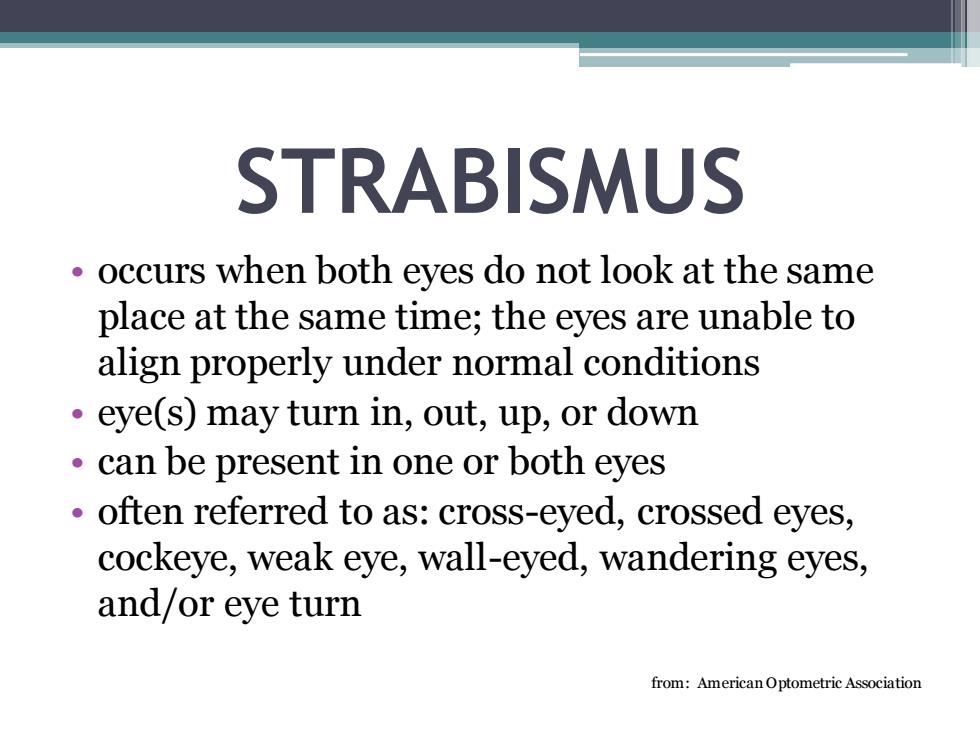
STRABISMUS occurs when both eyes do not look at the same place at the same time;the eyes are unable to align properly under normal conditions eye(s)may turn in,out,up,or down can be present in one or both eyes often referred to as:cross-eyed,crossed eyes, cockeye,weak eye,wall-eyed,wandering eyes, and or eye turn from:American Optometric Association
STRABISMUS • occurs when both eyes do not look at the same place at the same time; the eyes are unable to align properly under normal conditions • eye(s) may turn in, out, up, or down • can be present in one or both eyes • often referred to as: cross-eyed, crossed eyes, cockeye, weak eye, wall-eyed, wandering eyes, and/or eye turn from: American Optometric Association
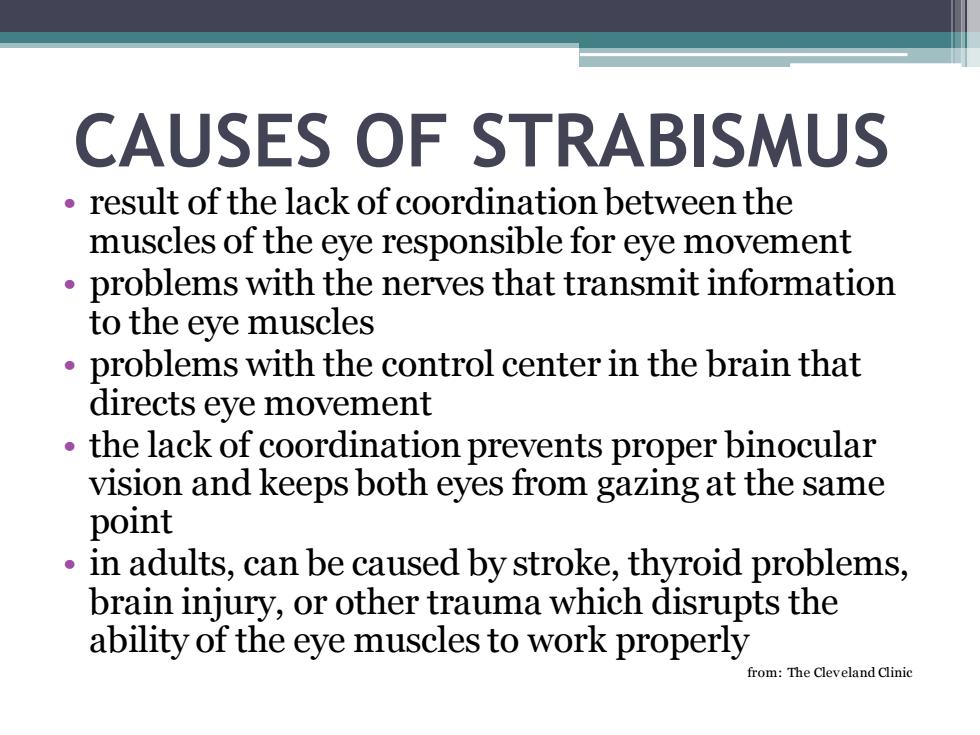
CAUSES OF STRABISMUS result of the lack of coordination between the muscles of the eye responsible for eye movement problems with the nerves that transmit information to the eye muscles problems with the control center in the brain that directs eye movement the lack of coordination prevents proper binocular vision and keeps both eyes from gazing at the same point in adults,can be caused by stroke,thyroid problems, brain injury,or other trauma which disrupts the ability of the eye muscles to work properly from:The Cleveland Clinic
CAUSES OF STRABISMUS • result of the lack of coordination between the muscles of the eye responsible for eye movement • problems with the nerves that transmit information to the eye muscles • problems with the control center in the brain that directs eye movement • the lack of coordination prevents proper binocular vision and keeps both eyes from gazing at the same point • in adults, can be caused by stroke, thyroid problems, brain injury, or other trauma which disrupts the ability of the eye muscles to work properly from: The Cleveland Clinic
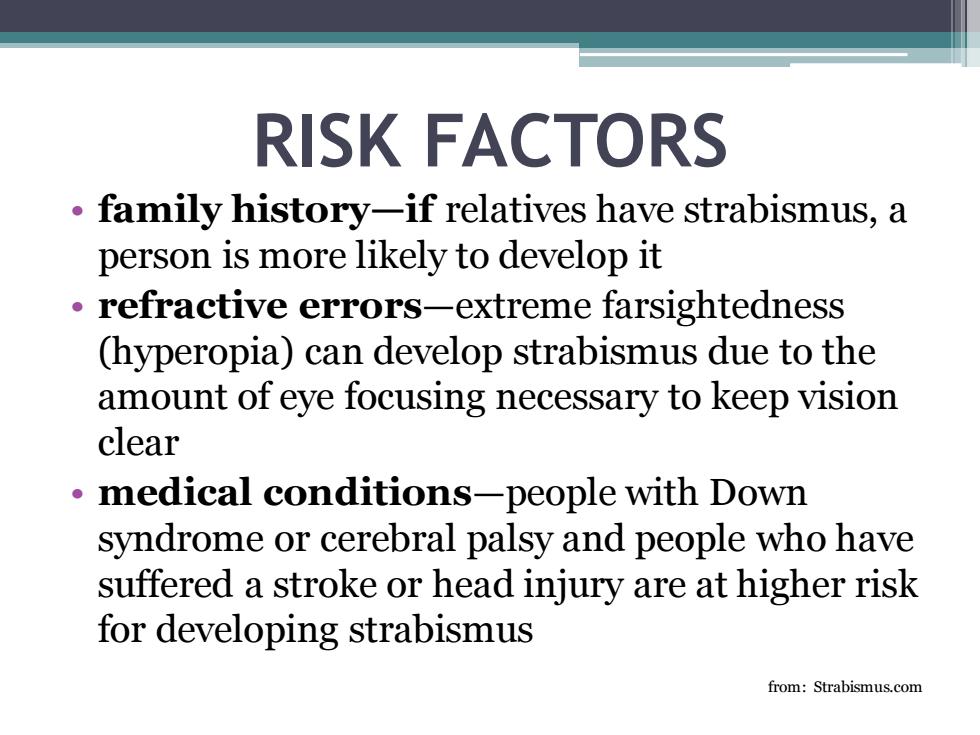
RISK FACTORS family history-if relatives have strabismus,a person is more likely to develop it refractive errors-extreme farsightedness (hyperopia)can develop strabismus due to the amount of eye focusing necessary to keep vision clear medical conditions-people with Down syndrome or cerebral palsy and people who have suffered a stroke or head injury are at higher risk for developing strabismus from:Strabismus.com
RISK FACTORS • family history—if relatives have strabismus, a person is more likely to develop it • refractive errors—extreme farsightedness (hyperopia) can develop strabismus due to the amount of eye focusing necessary to keep vision clear • medical conditions—people with Down syndrome or cerebral palsy and people who have suffered a stroke or head injury are at higher risk for developing strabismus from: Strabismus.com
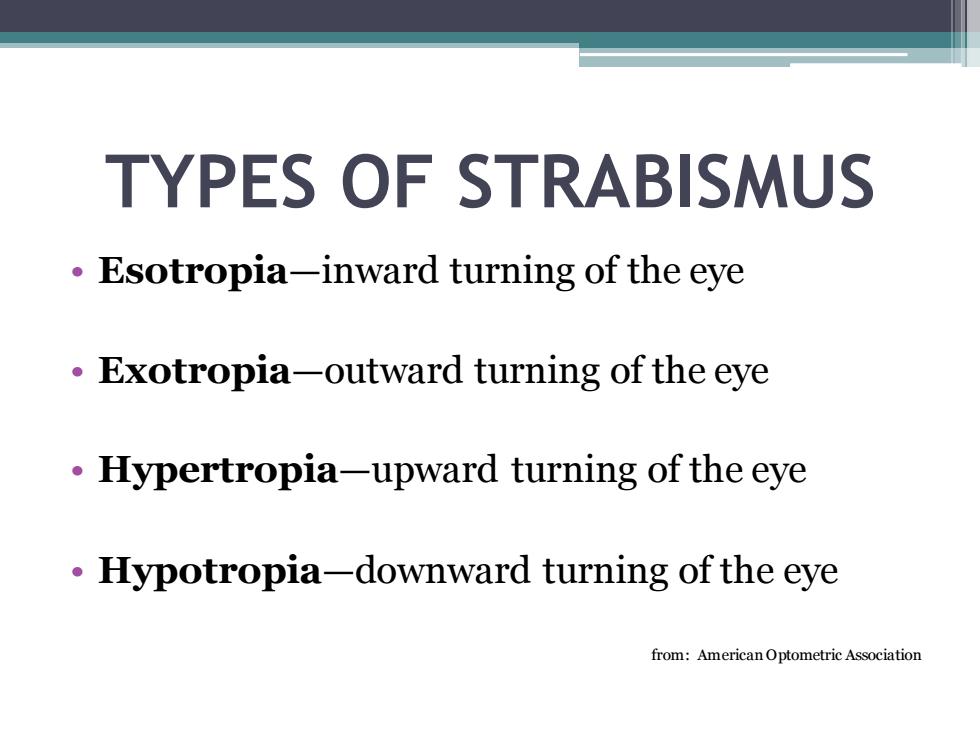
TYPES OF STRABISMUS Esotropia-inward turning of the eye Exotropia-outward turning of the eye Hypertropia-upward turning of the eye Hypotropia-downward turning of the eye from:American Optometric Association
TYPES OF STRABISMUS • Esotropia—inward turning of the eye • Exotropia—outward turning of the eye • Hypertropia—upward turning of the eye • Hypotropia—downward turning of the eye from: American Optometric Association
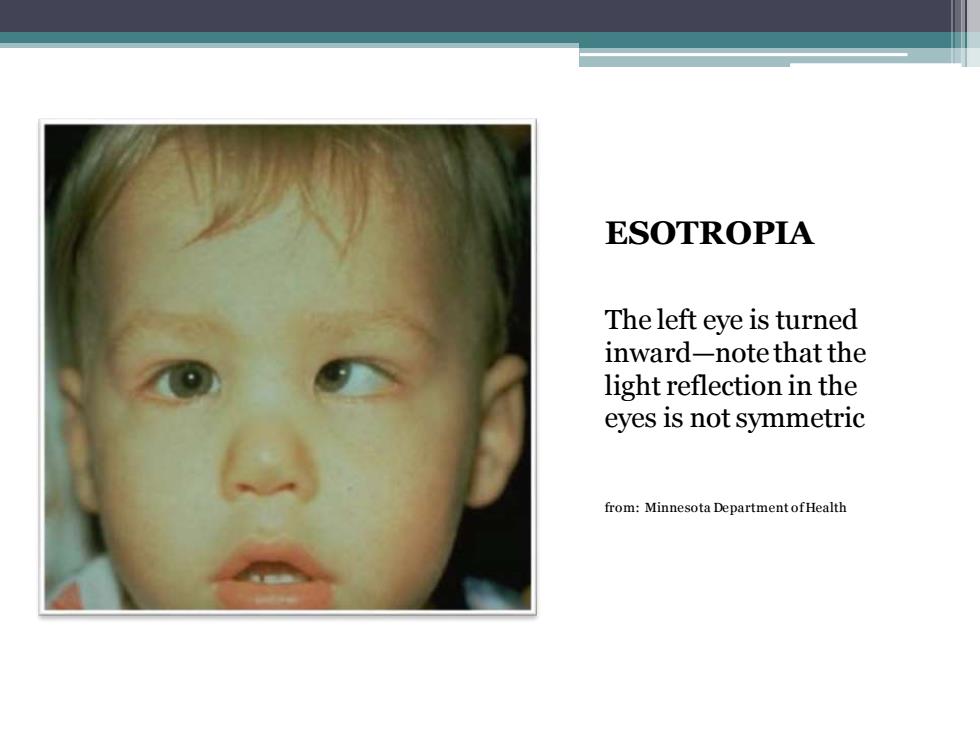
ESOTROPIA The left eye is turned inward-note that the light reflection in the eyes is not symmetric from:Minnesota Department ofHealth
ESOTROPIA The left eye is turned inward—note that the light reflection in the eyes is not symmetric from: Minnesota Department of Health
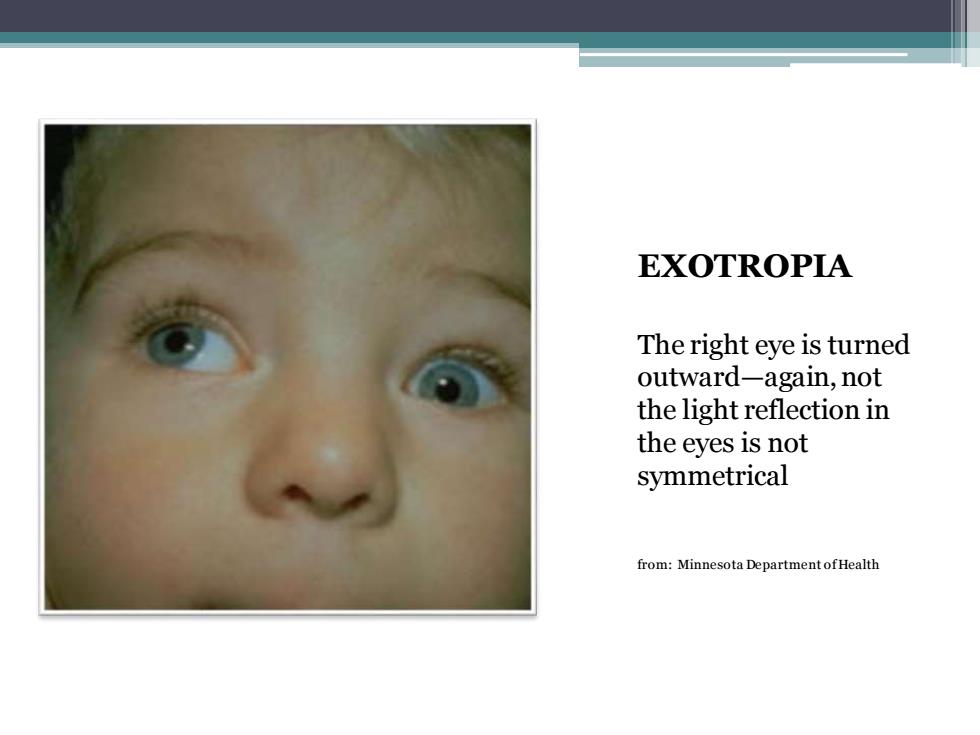
EXOTROPIA The right eye is turned outward-again,not the light reflection in the eyes is not symmetrical from:Minnesota Department ofHealth
EXOTROPIA The right eye is turned outward—again, not the light reflection in the eyes is not symmetrical from: Minnesota Department of Health
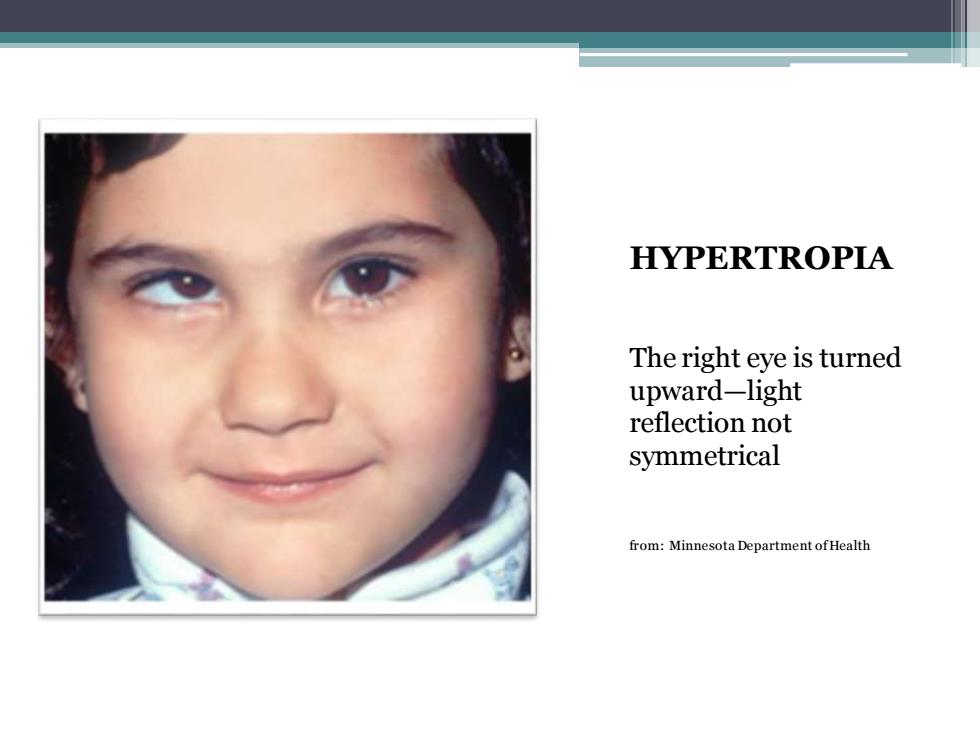
HYPERTROPIA The right eye is turned upward-light reflection not symmetrical from:Minnesota Department ofHealth
HYPERTROPIA The right eye is turned upward—light reflection not symmetrical from: Minnesota Department of Health
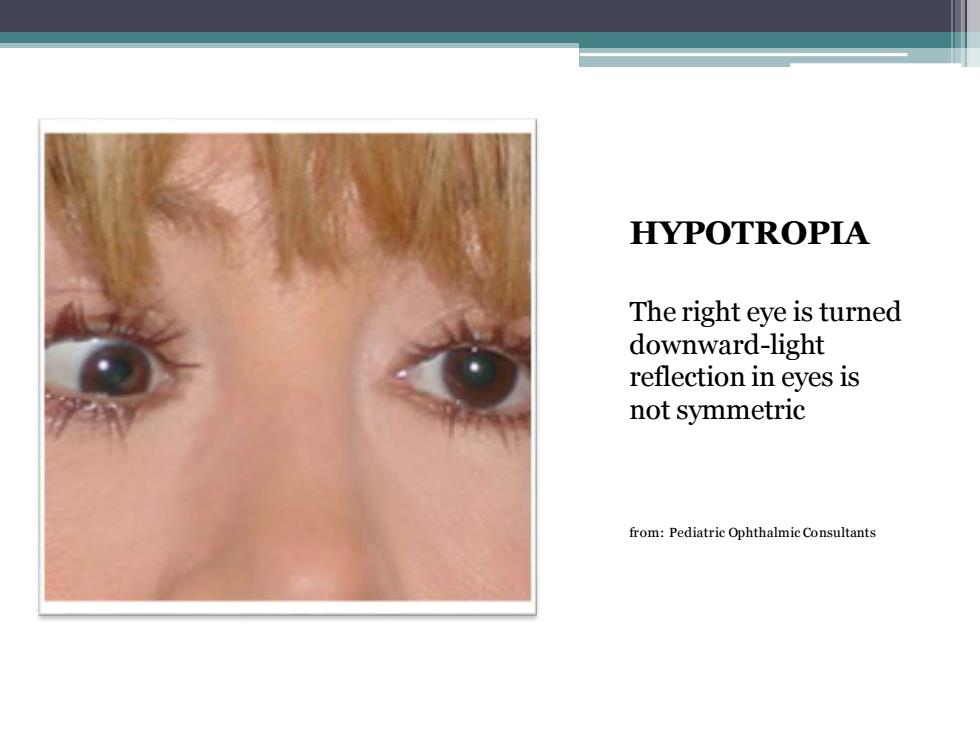
HYPOTROPIA The right eye is turned downward-light reflection in eyes is not symmetric from:Pediatric Ophthalmic Consultants
HYPOTROPIA The right eye is turned downward-light reflection in eyes is not symmetric from: Pediatric Ophthalmic Consultants
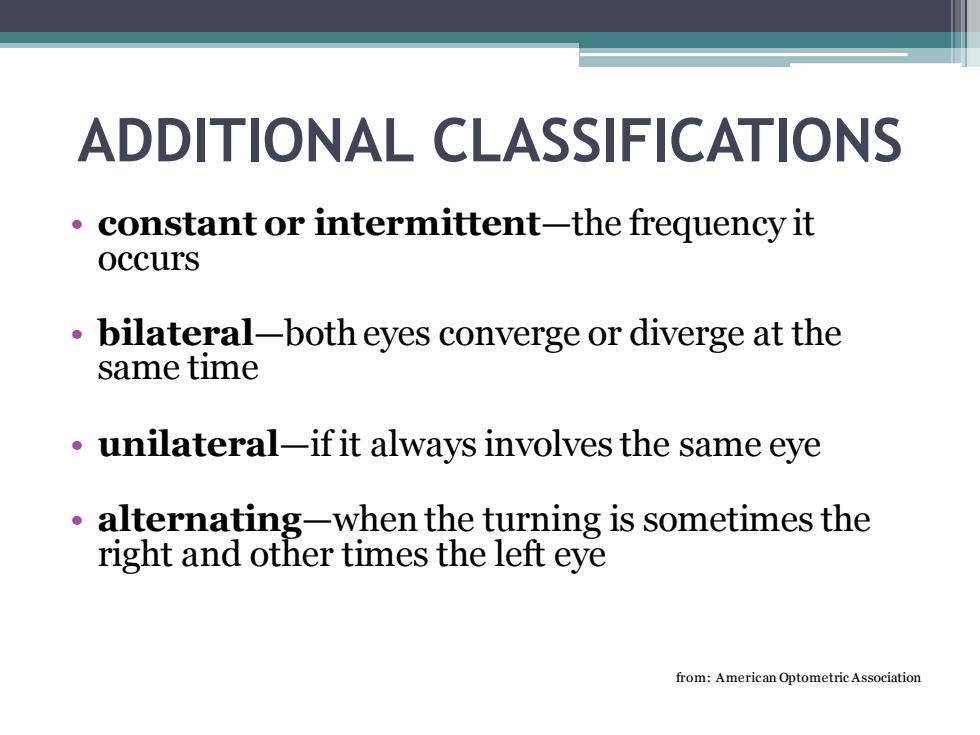
ADDITIONAL CLASSIFICATIONS constant or intermittent-the frequency it occurs bilateral-both eyes converge or diverge at the same time unilateral-if it always involves the same eye alternating-when the turning is sometimes the right and other times the left eye from:American Optometric Association
ADDITIONAL CLASSIFICATIONS • constant or intermittent—the frequency it occurs • bilateral—both eyes converge or diverge at the same time • unilateral—if it always involves the same eye • alternating—when the turning is sometimes the right and other times the left eye from: American Optometric Association
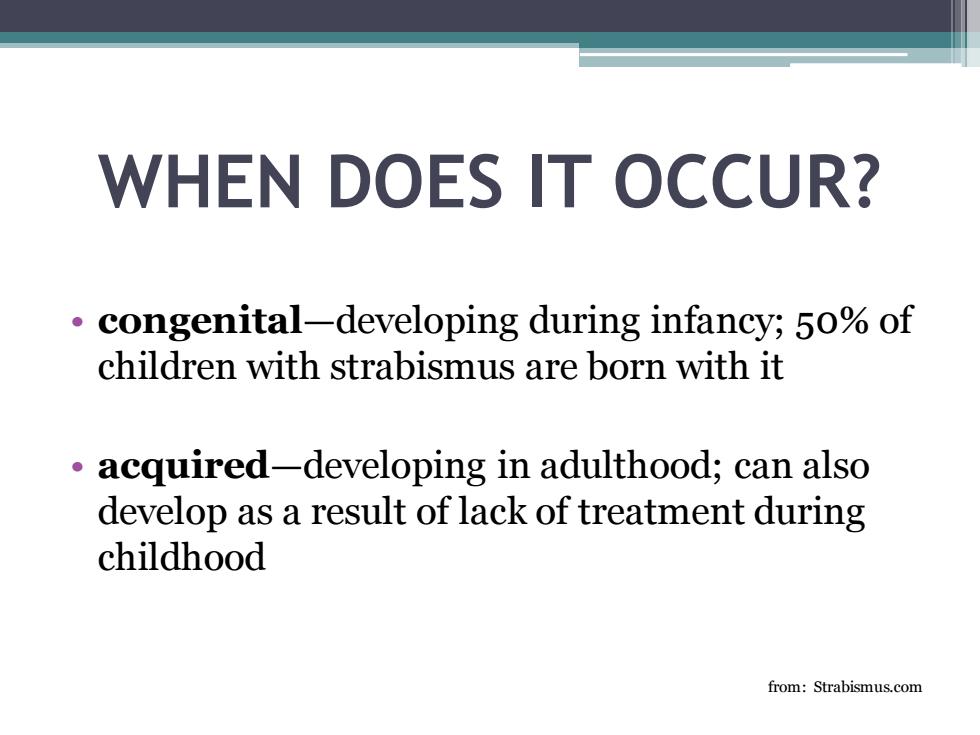
WHEN DOES IT OCCUR? congenital-developing during infancy;50%of children with strabismus are born with it acquired-developing in adulthood;can also develop as a result of lack of treatment during childhood from:Strabismus.com
WHEN DOES IT OCCUR? • congenital—developing during infancy; 50% of children with strabismus are born with it • acquired—developing in adulthood; can also develop as a result of lack of treatment during childhood from: Strabismus.com